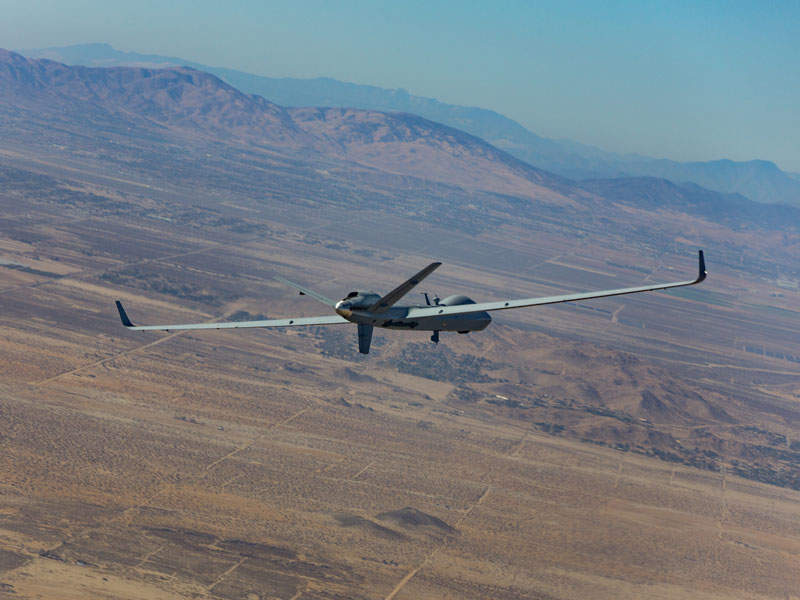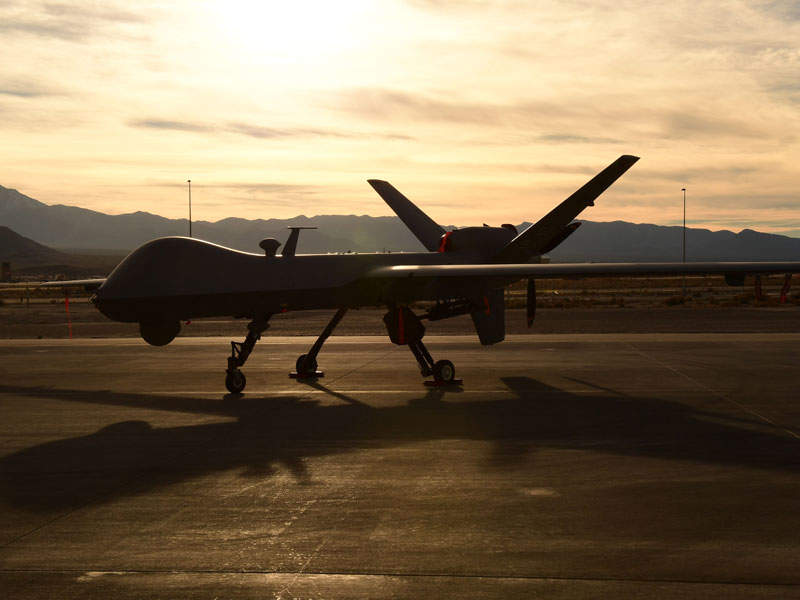SkyGuardian is a next-generation, type-certifiable variant of Predator B (MQ-9B) multi-mission remotely piloted aircraft (RPA) developed by General Atomics Aeronautical Systems (GA-ASI), a company based in the US.
Designed in accordance with NATO STANAG 4671 UAV system airworthiness requirements and the UK Def Stan 00-970 design and airworthiness standards, the new SkyGuardian variant can operate within civilian airspace.
It can carry out missions such as intelligence, surveillance and reconnaissance (ISR), maritime patrol, border surveillance and disaster relief. The maritime patrol variant, designated as SeaGuardian, is intended to conduct surveillance and patrol missions in open-sea and littoral environments.
Development of the Certifiable Predator B (CPB) variant began in 2012. An armed variant of SkyGuardian aircraft was selected by the UK Ministry of Defence for the Royal Air Force’s Protector programme in July 2016.
The aircraft performed its maiden flight in November 2016 and achieved a 48-hour endurance flight in May 2017. It was named as SkyGuardian in January 2017.
The RPA completed a Federal Aviation Administration (FAA)-approved flight in August 2017. The first production aircraft conducted the first ever transatlantic flight from Grand Forks, North Dakota, US to the Royal Air Force (RAF) Fairford station in Gloucestershire, UK, in July 2018.
GA-ASI partnered with CAE Canada, MDA, and L3 Wescam to offer the SkyGuardian aircraft for Canada’s RPAS project in May 2018.
SkyGuardian RPA design and features
The SkyGuardian variant comes with improved damage tolerant airframe and has a fixed-wing design with V-type tail configuration.
The length and wing spans are 11.7m and 24m respectively, while the maximum gross take-off weight is 5,670kg and fuel capacity is 2,721kg.
The aircraft can carry 363kg of payloads in the fuselage and 1,814kg of payloads externally.
Featuring a tri-cycle type undercarriage, it can perform automatic take-off and landing operations under all weather conditions.
Payloads and communications
The SkyGuardian carries Raytheon’s multi-spectral targeting system (MTS-B) sensor suite to provide long-range surveillance, intelligence, target acquisition and tracking capabilities. The MTS-B integrates sensors such as electro-optical / infrared (EO / IR) cameras, laser designator and a laser illuminator.
The aircraft’s sense and avoid system consists of a traffic collision avoidance system (TCAS), automatic dependent surveillance broadcast (ADS-B) system, identification friend or foe (IFF), and an optional due regard radar.
The RPA is equipped with GA-ASI’s Lynx multi-mode radar, which allows the EO / IR cameras to collect high-resolution imagery and video of both static and moving objects over a long range, using synthetic aperture radar and / or 360° maritime surveillance radar.
A C-Band line-of-sight communications link is used to distribute imagery and video captured by the onboard cameras to other aircraft and ground forces.
Additionally, the aircraft employs X, Ka, or Ku-band antennae and VHF / UHF radios to provide reliable communications over beyond line-of-sight (BLOS) distances.
An automatic information system can be fitted optionally to provide collision avoidance for the aircraft.
SkyGuardian weaponry
The remotely piloted aircraft is fitted with a total of nine hardpoints, four under each wing and one at centreline, to carry weapons weighing up to 2,177kg.
The armament options include precision-guided munitions, Paveway IV laser-guided bomb, and Brimstone 2 air-to-surface missiles.
Protection features
The RPA’s airframe offers improved survivability by preventing material fatigue and structural failures. The engine compartment is fitted with fire-protection system to extinguish fires.
A de-ice / anti-ice system is installed to minimise ice accumulation on the aircraft.
The drone also features a detect and avoid (DAA) system and has the ability to withstand bird and lightning strikes.
Command and control software
The SkyGuardian aircraft’s improved flight control software and avionics provide independent operation, including autonomous take-off and landing, using waypoint navigation.
GA-ASI’s Advanced Cockpit Ground Control Station enables remote operation of the air vehicle. It allows the operator to perform mission planning and flight monitoring, as well as change waypoints during the flight using human-centred display technology and moving maps.
Engine and performance of MQ-9B SkyGuardian RPA
Located in the tail section, the SkyGuardian RPA’s powerplant consists of a single Honeywell TPE331-10 turboprop engine, which develops a maximum take-off power of 940hp at 1,591rpm.
The air vehicle can fly at airspeeds of 210kt for a period of 40 hours. It has the ability to reach altitudes of 40,000ft above mean sea level.
Contractors involved
Hughes Network Systems, through its Defence and Intelligence and Systems Division, won a contract to provide satellite communications for the SkyGuardian variant.
In May 2017, GKN Aerospace received a $15m-worth contract from GA-ASI to manufacture fuel bladders.
The Global Unmanned Aerial Vehicles (UAV) Market 2011-2021
This project forms part of our recent analysis and forecasts of the global unmanned aerial vehicles (UAV) market available from our business information platform Strategic Defence Intelligence. For more information click here or contact us: EMEA: +44 20 7936 6783; Americas: +1 415 439 4914; Asia Pacific: +61 2 9947 9709 or via email.






